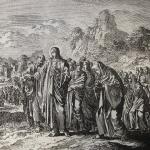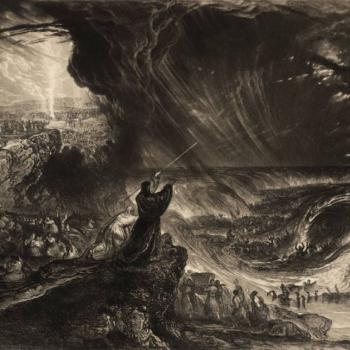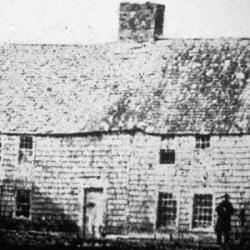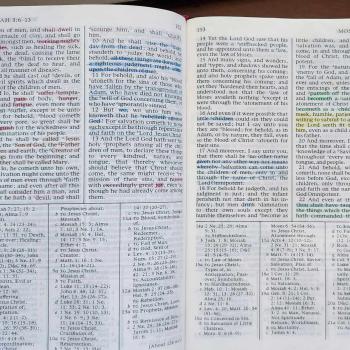In 3-A Triangle and Two Brothers, James and John, I briefly explored the powerful symbolism of a triangle and my journey as I applied ideas about triangles to gospel truths, specifically in pondering the whys of James and John’s names.
John means “Jehovah is gracious.” And James, or Jacob, means “supplanter, heel, to substitute by reason of superior excellence or power, or filling of a place once occupied, lost, destroyed, or no longer usable or adequate.”
This post continues that thread by adding Peter to the mix. I put Peter at the head of the triangle.
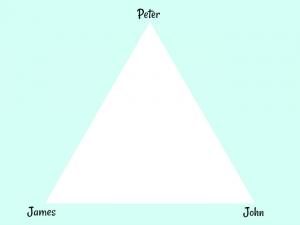
I can’t think of a time I haven’t known Peter meant “a rock.” My parents diligently taught us the scriptures and we talked about firm foundations and rocks a lot. I ascribed my initial love for rocks from awesome discussions we had throughout my childhood.
In 1991, while in the garden at Yad Vashem in Jerusalem, our guide said only river rocks were used in sacrificial altars (as per the Old Testament/Talmud) because each rock symbolized a soul. No rock that had been hammered or broken could be used for an altar.
That symbolism radically increased my obsession with rocks. I have rocks from significant places I’ve been. My most precious rocks include temple granite, a rock from the valley of Elah, and my most favorite, a rock purchased for $1 from a Bedouin man at the base of Mount Sinai. He broke it open for me revealing a beautiful geode.
With all my rock experience, I fairly casually perused Google’s meaning for Peter. “Stone, building material, gem or jewel, hard substance that comes from the ground.” Then I saw something unexpected. The name Peter derived from the Sanskrit word for “Father.”
Father. That changed everything for me.
Upon This Rock
My mind flew to the well-known verse
He saith unto them, But whom say ye that I am? And Simon Peter answered and said, Thou art the Christ, the Son of the living God.
And Jesus answered and said unto him, Blessed art thou, Simon Bar-jona: for flesh and blood hath not revealed it unto thee, but my Father which is in heaven.
And I say also unto thee, That thou art Peter, and upon this rock I will build my church; and the gates of hell shall not prevail against it.
And also
Fear not, little children, for you are mine, and I have overcome the world, and you are of them that my Father hath given me; And none of them that my Father hath given me shall be lost.
And the Father and I are one. I am in the Father and the Father in me; and inasmuch as ye have received me, ye are in me and I in you.
Wherefore, I am in your midst, and I am the good shepherd, and the stone of Israel. He that buildeth upon this rock shall never fall.
I’ve memorized these verses! I see patterns! But I hadn’t really paid attention to the Father’s proximity in these statements.
Rocks Versus Dust
I casually reread the definitions at the top of my triangle. Father. Stone. Hard substance that comes from the ground. Gem or jewel. Building materials.
Dust! Dust sprang to mind. The Father and Son are rock/stone and I am dust.
In the sweat of thy face shalt thou eat bread, till thou return unto the ground; for out of it wast thou taken: for dust thou art, and unto dust shalt thou return.
Is there any hope for the dust? Yes!
One of my favorite scriptural metaphors is of the potter and his clay. The potter takes dust, adds water to create a form, then adds fire to harden the dust/mud into a stone. The stone can still be ground to bits, no doubt. But the metaphor of dust becoming hardened through specific acts (ordinances) is beautiful.
The process of an oyster taking petulant sand and creating a pearl also flashed to mind.
From Dust to Gems
From age to age shall their names go down to posterity as gems for the sanctified.
Yet I will own them, and they shall be mine in that day when I shall come to make up my jewels.
Gems representing each tribe of Israel adorned the high priestly ephod. According to Revelation, those same stones adorn the city of God.
And the building of the wall of it was of jasper: and the city was pure gold, like unto clear glass.
And the foundations of the wall of the city were garnished with all manner of precious stones. The first foundation was jasper; the second, sapphire; the third, a chalcedony; the fourth, an emerald;
The fifth, sardonyx; the sixth, sardius; the seventh, chrysolite; the eighth, beryl; the ninth, a topaz; the tenth, a chrysoprasus; the eleventh, a jacinth; the twelfth, an amethyst.
And the twelve gates were twelve pearls; every several gate was of one pearl: and the street of the city was pure gold, as it were transparent glass.
In the hands of the Potter, we become rock.
And now, my sons, remember, remember that it is upon the rock of our Redeemer, who is Christ, the Son of God, that ye must build your foundation; that when the devil shall send forth his mighty winds, yea, his shafts in the whirlwind, yea, when all his hail and his mighty stormshall beat upon you, it shall have no power over you to drag you down to the gulf of misery and endless wo, because of the rock upon which ye are built, which is a sure foundation, a foundation whereon if men build they cannot fall.
Back to the Triangle

At the top of the triangle is Peter—rock, Father. James—supplanter, heel. John—the Lord is gracious.
If Lydia Bell’s definitions of a triangle’s symbolism holds true—the single thing is wholeness with its unity consisting of parts, which parts are inextricably bound to each other—what does this triangle speak to you?
One thing the name meanings, enhanced by the triangle, spoke to me was Godhead—Father, Son, and Holy Ghost.
As with every true thing, this study on triangles brought me full circle to a greater understanding of Deity that I can see, feel, and know.
Wherefore, I am in your midst, and I am the good shepherd, and the stone of Israel. He that buildeth upon this rock shall never fall.


